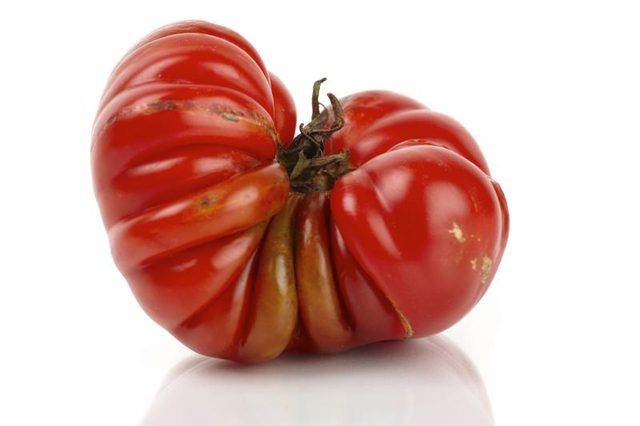Bulbs
Flower Basics
Flower Beds & Specialty Gardens
Flower Garden
Garden Furniture
Garden Gnomes
Garden Seeds
Garden Sheds
Garden Statues
Garden Tools & Supplies
Gardening Basics
Green & Organic
Groundcovers & Vines
Growing Annuals
Growing Basil
Growing Beans
Growing Berries
Growing Blueberries
Growing Cactus
Growing Corn
Growing Cotton
Growing Edibles
Growing Flowers
Growing Garlic
Growing Grapes
Growing Grass
Growing Herbs
Growing Jasmine
Growing Mint
Growing Mushrooms
Orchids
Growing Peanuts
Growing Perennials
Growing Plants
Growing Rosemary
Growing Roses
Growing Strawberries
Growing Sunflowers
Growing Thyme
Growing Tomatoes
Growing Tulips
Growing Vegetables
Herb Basics
Herb Garden
Indoor Growing
Landscaping Basics
Landscaping Patios
Landscaping Plants
Landscaping Shrubs
Landscaping Trees
Landscaping Walks & Pathways
Lawn Basics
Lawn Maintenance
Lawn Mowers
Lawn Ornaments
Lawn Planting
Lawn Tools
Outdoor Growing
Overall Landscape Planning
Pests, Weeds & Problems
Plant Basics
Rock Garden
Rose Garden
Shrubs
Soil
Specialty Gardens
Trees
Vegetable Garden
Yard Maintenance
How to Prune Beefsteak Tomatoes
How to Prune Beefsteak Tomatoes. Few garden crops can beat homegrown tomatoes (Lycopersicon esculentum) for fresh flavor, and few tomato plants can top the beefsteak variety for enormous fruits -- some weighing 1 pound or more. These bright red, extra-fleshy tomatoes grow on large, indeterminate plants that keep getting taller all season long....

Few garden crops can beat homegrown tomatoes (Lycopersicon esculentum) for fresh flavor, and few tomato plants can top the beefsteak variety for enormous fruits -- some weighing 1 pound or more. These bright red, extra-fleshy tomatoes grow on large, indeterminate plants that keep getting taller all season long. Prune the plants at the right time and with the right method to help keep them under control, while also maximizing the crop of tomatoes each one yields.
Trimming at Planting
Whether you start beefsteak tomato plants from seeds or purchase seedlings, wait until nighttime temperatures stay above 45 degrees Fahrenheit before moving them into the garden. Acclimate your plants first by gradually increasing their exposure to outdoor conditions over a week or two -- called hardening off -- then plant each one in full sun.
When planting, dig a deep hole with room for the lower 2 or 3 inches of stem to be underground, because tomatoes grow roots from buried stems, making a stronger plant. Before you plant each seedling, use sharp shears to cut away any lower leaves from this part of the stem, to promote root growth and prevent rotting of these lower leaves. Clean your shears by wiping them with rubbing alcohol between cuts to prevent the spread of plant disease.
Shaping the Plant
As your beefsteak seedlings grow, prune the plants to encourage one or two strong, central stems, removing side suckers as they grow. These are thin shoots that appear at leaf axils -- the points on the stem where leaves originate. Use pruning shears to remove all but one or two strong upright stems, and use your fingertips to pinch out suckers as soon as they appear. If you miss suckers when they're small and they get larger, cut them off at their origins with sharp, pointed shears, being careful not to injure the main stem.
Removing suckers helps encourage the plant's energy toward production of tomatoes, but you'll also need to provide a pruned plant with support as it grows. Either tie the stem with soft ties to a sturdy stake driven into the ground or use strings hanging from a horizontal wire supported on stakes.
Other Pruning
As a beefsteak tomato plant grows, it might develop a fungal disorder common to tomatoes called leaf spot on its lower branches. This fungus causes dark spots, followed by yellowing of leaves that eventually dry up and die. Although leaf spot rarely kills a plant, it's a good idea to cut away these leaves as they develop, discarding the leaves away from the plant. For this and any other pruning, sterilize your pruners first. Dip your shears between cuts in a bleach solution made with 2 capfuls of bleach diluted in 1 gallon of water.
You can also help the plant resist fungal infection by pruning away some foliage at its center to improve air circulation, but only remove a few leaves here and there so that you don't slow energy production significantly.
Pruning in Late Summer
Like all tomatoes, the beefsteak variety is grown as an annual in all parts of the United States. As late summer approaches, it's unlikely that tomatoes on the youngest, upper part of the plant can ripen before the plant dies off, so cut back its central stems near summer's end to a point just in front of partially formed, green fruits. This helps funnel the plant's remaining energy into these last fruits of the season, which usually grow to full size and maturity before cold weather arrives.
Because the beefsteak variety is indeterminate, it can also get exceptionally tall as the season progresses, often becoming difficult to support as it grows taller. Late season pruning also helps control the plant's size and makes it easier to keep it supported.